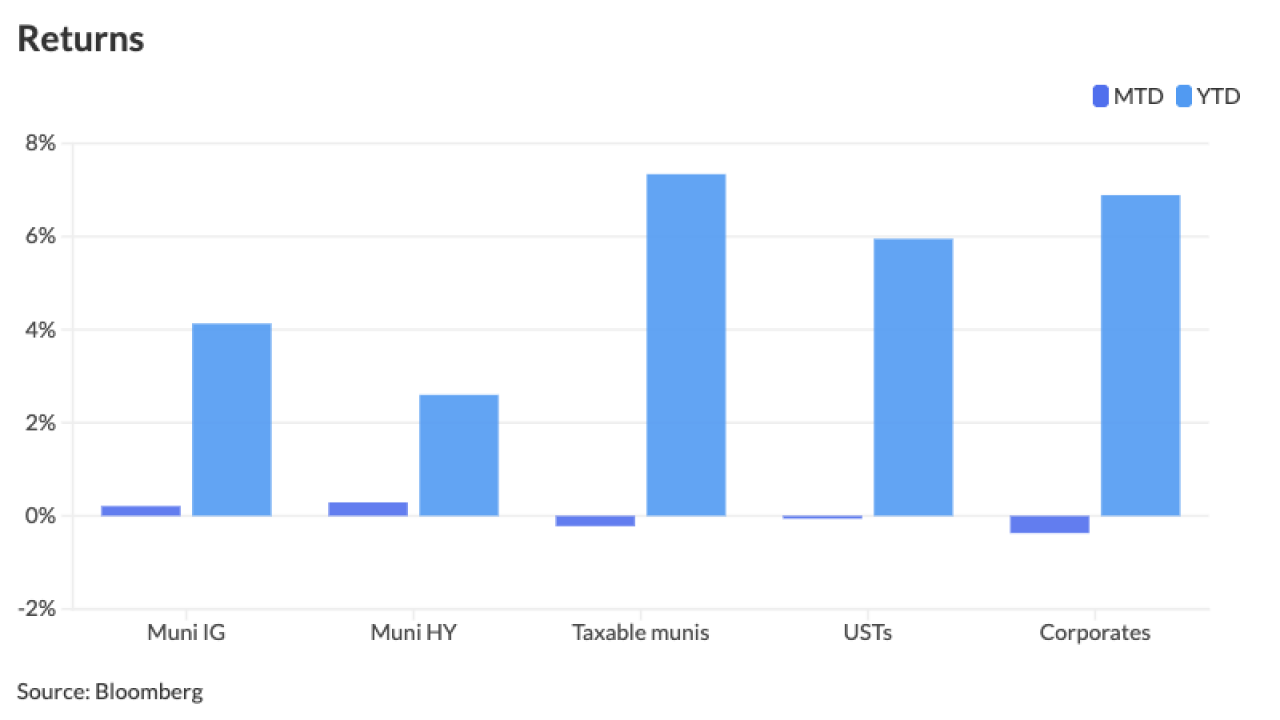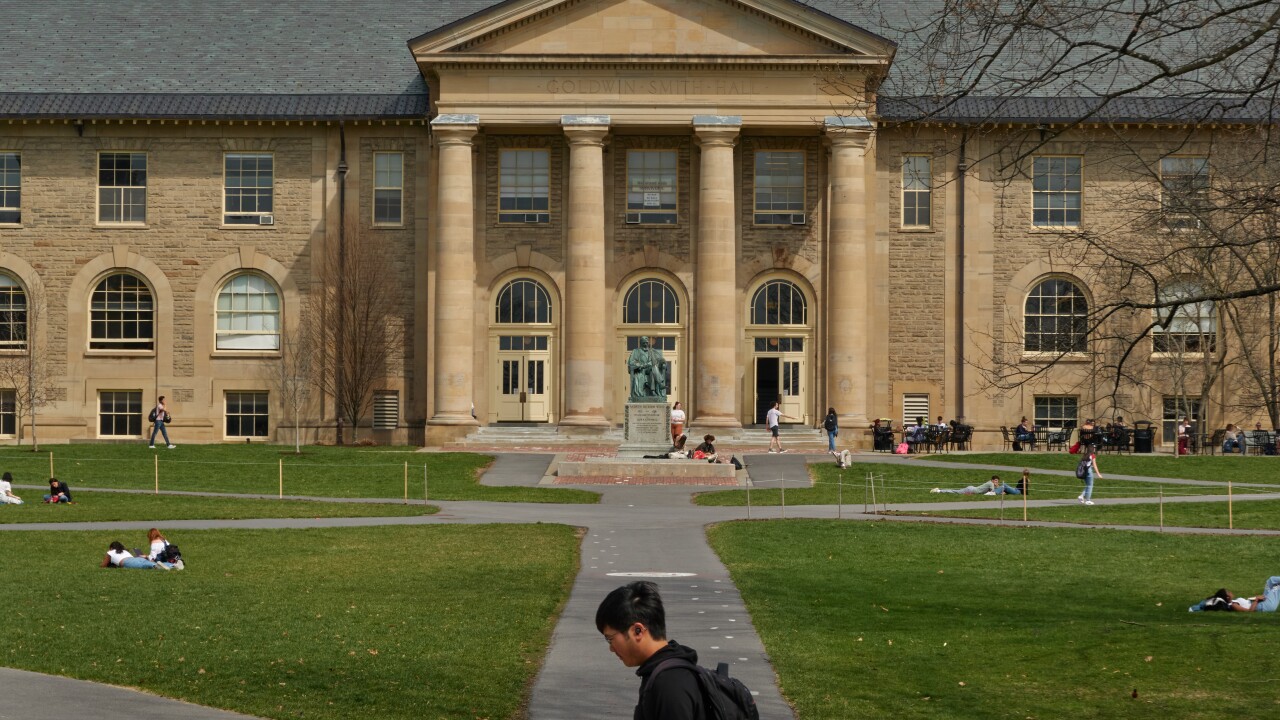CHICAGO — Triple-A rated University of Michigan will enter the market today with $163 million of general revenue Build America Bonds.
The issuer plans to return in February with roughly $200 million of refunding bonds, officials said.
Today’s transaction could include some traditional tax-exempt, fixed-rate debt, but as of Friday officials said they expect to issue all the debt as taxable BABs.
As one of the most prestigious public universities in the country, the University of Michigan derives much of its revenue from outside the state. But Michigan’s fiscal challenges could have some impact on the highly rated issuer in the future, analysts warned.
Barclays Capital is senior manager on the deal. Bank of America Merrill Lynch, Wells Fargo Securities, and Edward Jones are also on the underwriting team. Detroit-based Miller, Canfield, Paddock and Stone PLC is bond counsel.
The finance team will wait until this morning before finalizing the transaction, but tentatively the debt will be mostly BABs that are structured as term bonds maturing in 2030 and 2040. If the team opts to issue tax-exempt debt, it most likely will feature maturities from 2023 through 2027, according to bond documents.
“We want the flexibility to change, but based on today’s market, the whole transaction will be BABs,” said Milagros Dougan, the university’s assistant treasurer.
The university issued $90 million of BABs in June.
Proceeds from today’s deal will finance work on a women and children’s hospital and an expansion of an eye care center. The projects are part of the university’s 10-year, $5.5 billion capital plan.
“We have a large capital plan for the university, and we are financing a portion of that with debt, but a large portion is financed with our internal funds,” Dougan said.
She added that the university expects to borrow debt for the plan next year but the size is still uncertain.
The bonds are secured by a pledge of the university’s general revenues, which do not include state appropriations or hospital gross revenues from the University of Michigan Hospitals and Health Centers. Hospital revenue accounts for a substantial piece of the university’s overall income, making up 43% of operating revenue in fiscal 2009.
In affirming its Aaa rating on the university ahead of today’s sale, Moody’s Investors Service noted its strength as one of the top public universities in the nation, with nearly 60,000 students, strong balance sheets and operating results, as well as its relationship with the hospital and health centers, considered the region’s top academic health care provider.
But analysts also warned that the university could be vulnerable to fiscal challenges facing the hospitals and the state. The school relies heavily on the hospital and health system, which has suffered from weakening performance over the last three years and could see increased pressure on its revenues due to shrinking state funding for Medicaid and national health care reform efforts.
The university could also see decreased aid from the state, which has cut its higher education budget as it continues to grapple with deficits, record-high unemployment rates, and fallout from the recent bankruptcies of the top two U.S. automakers.
However, the university derives less than 10% of its revenue from state appropriations and much of its revenue is drawn from out-of-state sources, analysts and university officials said.
“To a certain extent we’re isolated from the impact of the state. Our state appropriation is in the single digits, and the impact is mitigated by the diverse funding sources of the university,” Dougan said.
The University of Michigan’s outstanding debt totals $1.5 billion. Of that, 37% is floating rate, much of it backed by self-liquidity, including the $200 million that will be refinanced into fixed-rate debt next month.





